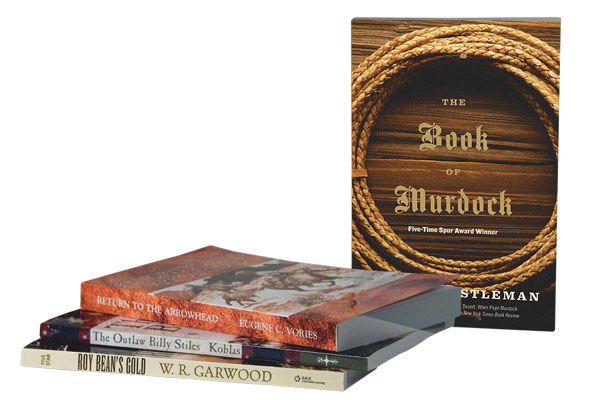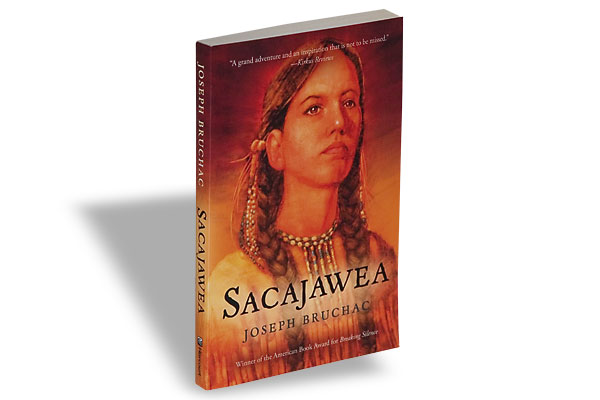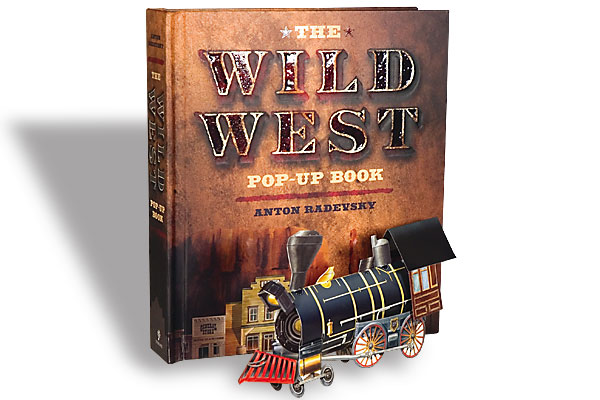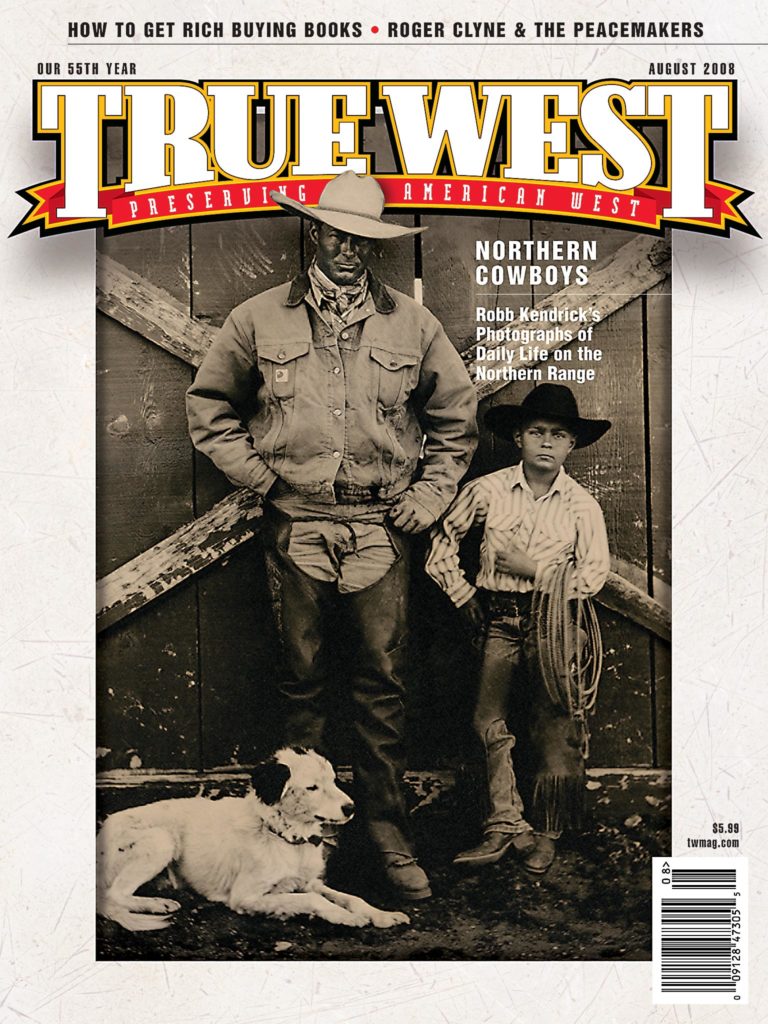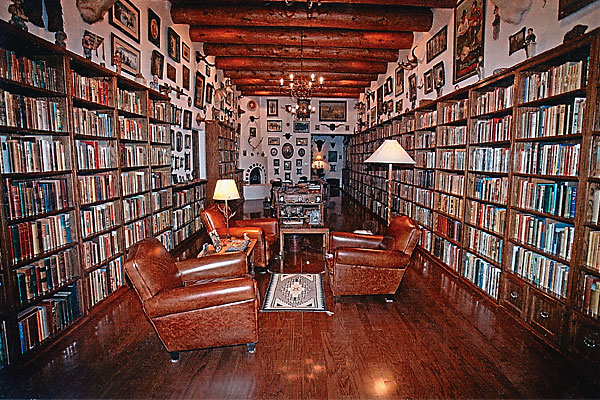
Back in 1986, while participating in an “archaeological dig” at the site of the McSween house in Lincoln, New Mexico, I first met Bob McCubbin.
To my amazement—for I had just embarked upon a comprehensive study of the Lincoln County War—he produced the family photo album of Jimmy Dolan, a leading figure in that conflict. I was astonished—first, that the album existed, and second, because it was packed with original, unpublished photographs. When I asked Bob whether I might use some of them in my book, he agreed without hesitation. A short while later, a sort of unofficial collaboration began.
From then on, we corresponded regularly, me telling him about my findings (mostly, but not always, biographical) and he about his (mostly, but not always, photographic). The high point of our “collaboration” came in 1999 when he acquired (through me) the butcher knife Billy the Kid was carrying the night he was killed. Over the years, I’ve contributed one or two other treasures for his collection, including a thriller I wrote called Rat Run, which features a courageous, young, U.S. Navy lieutenant named—you guessed it—Bob McCubbin.
Today, the McCubbin collection houses first editions of virtually every book touching on outlaw-gunfighter history, together with a multitude of photographs, artifacts and documents unsurpassed by any private archive in the world. Many of these have appeared in the books of the many other writers he has as generously supported as he first supported me. I can’t recall how many road miles we’ve traveled together, but he’s a good man to ride the river with and I’m proud to call him my friend. I just wish he’d talk faster.
FN: How many books are in your collection?
RGM: Precisely 7,266, counting the one that came today. Every one of those books is there for a reason, because it complements the collection. The figure does not include the books in the garage, of course, as they are not a part of my collection.
Can you remember the first book you ever bought and how much it was?
The first book I bought on the subject I eventually collected was The Saga of Billy the Kid by Walter Noble Burns. It was a Grosset and Dunlap reprint that sold for $1.49. I still have it, or a copy exactly like it.
When did you begin seriously collecting outlaw-gunfighter books?
I began reading such books when I was 15 years old. From the beginning I wanted to own the book I read, and have it close by, rather than borrow from the library. I started searching for the books I found listed in the bibliographies of my books. I suppose I have a born collector’s instinct, as it wasn’t long before I wanted “first editions.” That is when I became a true collector. But it was not a specific decision; it just evolved.
If you had to name the “stars” of your collection, which books would they be?
The premier book in the field is The Authentic Life of Billy the Kid by Pat Garrett, published in Santa Fe in 1882. I have three copies, each slightly different.
There are many others as rare or rarer in my collection such as Hands Up! by Al Sorenson, Omaha, 1877; Billy the Kid, the New Mexico Outlaw by Edmund Fable, Denver, 1881; Authentic History of Sam Bass and His Gang by a citizen of Denton County, Denton, Texas, 1878; and dozens more equally rare.
Why did you buy three copies of Authentic Life of Billy the Kid?
Because they are all variants. “Variants” may be different color bindings, errors in early printings, special deluxe copies, unknown printings, etc. I have on my shelves as many as five copies of the “first edition” of a book, each with some variation. Sometimes the variants are virtually unknown and are earlier editions than the so-called first editions. An example in my library is The Story of Texas Jack, printed in the late 1890s, while the only recorded edition appeared in the 1930s.
Which of all the books in the area you collect has increased the most in value?
I suppose the Garrett book has increased the most because it is the one everyone is looking for.
Any signed copies?
My favorite signed book is a copy of what is probably the rarest book on the James/Younger outlaw gang, The Story of Cole Younger By Himself, published in 1903. The full-page photos of Frank James and Cole Younger in my copy are signed by them. Another good one is a copy of Geronimo’s Story of His Life, 1906, with a tipped in photo of Geronimo signed by the warrior himself. In his old age, he was taught to block letter his name and sold autographs and signed photos at public appearances.
What are “association” books?
An “association” copy of a book has some important signature, bookplate or tipped-in letter that ties it to a well-known person. An example is a copy I have of a rare book titled Early Days in Texas by Jim McIntire, 1902, that is inscribed, “Hon. Pat F. Garrett, From his friend, Temple Houston, Aug. 1903.” Garrett (who, of course, killed Billy the Kid) and Houston (a son of Sam Houston and somewhat of a gunfighter himself) knew each other years earlier in Tascosa, Texas.
If you had a fire and could only save one book, which would it be?
An impossible question! I would probably just stay and burn up with the books.
Are there any books you wish you had never bought, or for which you paid far too much money?
There are none that I regret buying. There are many that I wish I had bought but did not, for one reason or another … usually because I could not afford it. I eventually learned to live by a saying of Archibald Hanna at Yale University Library: “When a book you want and need becomes available, buy it and figure how to pay for it later.” But I still slip up now and then.
What was your luckiest find?
Many, if not most, of my books come to me through friends and associates in the field of books. By the way, friends and associates are essential to be a successful collector.
A gentleman came in to a book shop near Boulder, Colorado, with a copy of an exceedingly rare book titled Clay Allison of the Washita by O.S. Clark, privately printed in 1920. (There was a 1922 edition, much different and much easier to find.) The dealer did not know anything about it and put the gentleman in touch with me. I promptly bought it. I have never seen a copy on the market before or since.
I also tracked down an elderly lawyer in Oklahoma who knew Henry Starr’s son and got from him Henry Starr’s exceedingly rare book, Thrilling Events: Life of Henry Starr.
But that wasn’t so much luck as diligence, which is also something a collector needs to possess. Most of my good finds were either through friends or diligence, rather than “luck”.
Are books a good investment?
Yes, books can be a good investment, but only if you buy wisely. Don’t overpay, buy first editions and buy the finest copies you can find. Most collectors don’t buy books as an investment.
Collecting is an adventure and a hell of a lot of fun. Sometimes a collector overpays because of the excitement of finding something sought for a long time. But even then, if it is a first edition, a worthwhile book, in nice condition—and you live long enough—you will see it significantly appreciate in value.
For the three copies of Authentic Life of Billy the Kid, I paid $3,000 in 1983, $25,000 in 2006 and $30,000 in 2007. Another is now on the market at $30,000. For the Billy the Kid by Fable, I paid $30,000, probably top dollar. But, remember, there is only one other known copy and it is in a library. These represent the top prices I paid for books and have been obtained in recent years when a couple of significant collections became available.
Before the year 2005, I rarely paid more than $1,000 for a book. Before 1995, I rarely paid more than $500 for a book. For example, I paid $500 in 1980 for the Thrilling Events: Life of Henry Starr. The same with the Clay Allison of the Washita, $500 in 1982.
What you pay for a book is almost irrelevant as time passes. When and if one becomes available, it depends what a collector is willing to pay considering it might be the last time in his lifetime there will be an opportunity to buy a copy.
From my point of view, books are the best possible things to collect. They are objects, as are all collected things, and they are of great variety and interest. No two look exactly alike. Some are beautiful … literally works of art. Others have the look and feel of history itself. At the same time, there is wisdom, entertainment and knowledge within them.
I know you love books and have often bought them even when you could ill afford them. Have you ever bought a book purely as an “investment”?
No. Well, I guess that isn’t exactly true. When you collect, you learn the values of books. So, when you run across one somewhere which you already have in your collection, and it is priced so far below the market value as you know it, it is foolish not to buy it and use it either to sell or trade somewhere down the line.
You once told me precious few collector’s items were left for you to acquire. Is this still true?
I am afraid that is largely true. But I never stop looking and hoping.
What books are you looking for now?
I have about 30 books on my “Want List,” but they are nearly all virtually unobtainable. None out there anywhere to buy in the last 20 years or more, at least at a price I can afford. So, I am mostly buying new books as they come out now.
The books highest on my Want List have been there a very long time. None of the books are common, or they would not be on the list. Exceedingly rare are titles such as the 1892 edition of Life of the Marlows. I had a copy once, but it was defective—missing some pages—so I parted with it. Wish I hadn’t. It was the only copy I have seen on the market in 50 years of looking.
Another that has eluded me is Evans and Sontag by Maxwell, 1893. Copies have become available but so beat-up and ugly, I couldn’t put them in my library.
Both of these two books only appeared in paper covers. Neither would bring the price of an 1882 Authentic Life of Billy the Kid by Pat Garrett, because not that many collectors are looking for them.
One book on my want list that I never expect to own is The Life & Adventures of Joaquin Murieta, 1854. One of only two or three known copies sold for $80,000 a few years ago, and it had facsimile paper covers.
Some I am seeking won’t be very expensive when I find them … like a little hardbound book titled Retrospection. The author is Edgar Walz and it was printed in 1931 and only has 31 pages. Now who would want that book, besides me?!?
If someone told you they wanted to start a collection today, how would you advise them to proceed?
Collect what you like. Collect worthwhile books. Buy first editions and the finest copies you can find. Do a lot of research on pricing.
First editions that could be bought for hundreds of dollars 25 years ago now sell for thousands and in some cases tens of thousands. Do you think this trend will continue?
Yes. I have heard many more knowledgeable than me say that rare books are the most underpriced collecting field there is. But I am not in it for the investment (although it is darn nice that values have increased); I am in it because I love books and collecting them. There is nothing I would rather fondle than a book … well, almost nothing.
BOOKSELLERS’ BEST BUYS
Hottest new Western book: “Frontier Classics Library” a series of 60-plus affordable reprints of classic Westerns, including histories on Indians, the fur trade, outlaws and range wars, published by Palladium Press.
Contemporary Westerns that should gain status as a classic: Marauders of the Indian Nations by Glenn Shirley; Bill Doolin, Outlaw O.T. by Bailey Hanes; and The Indian Wars of the West by Paul Wellman.
Book I have not read that I feel I should have: I seldom read fiction but on my must list is Tony Hillerman, a fellow Oklahoma author and he is very popular.
Others rave about this, but I can’t understand the appeal: Any novel that pretends to portray the moral decay and general degradation of a town and its people is certainly not on my reading list (e.g. The Last Picture Show; Walter Benjamin at the Dairy Queen; In Cold Blood).
—Jim Edwards, Owner, Abalache Books & Antique Shop in Oklahoma City, Oklahoma
Contemporary Westerns that should gain status as a classic: Classic Gunfights by Bob Boze Bell. I regularly recommend these volumes to anyone looking for overviews of characters of the Old West because they won’t have to wade through a lot of small print superfluous information before they get to the good stuff. Triggernometry by Eugene Cunningham is, in my book, already a classic and is a book that has some of the most well-researched information on the subject of gunfighters. The Big Bonanza by Dan DeQuille is considered the “bible” of Virginia City history. Wright was the editor of the Territorial Enterprise newspaper.
Book I have not read that I feel I should have: Jim Bridger by J. Cecil Alter is a book that I have started several times. Bridger was a pivotal Mountain Man and contemporary of Fremont and Carson. His life provides insight into how the West got to be what it was later in the 1860s.
Others rave about this, but I can’t understand the appeal: Books about Billy the Kid. He has been “written to death.” People maintain that fascination with him but I, and probably a lot of other people, have really lost interest in him as a Western icon.
–Joe Curtis, Owner, Mark Twain Bookstore in Virginia City, Nevada
Hottest new Western book: Cowboy Values: Recapturing What America Once Stood For by James P. Owen. Brilliant photography along with clever summations of ethics, values and integrity will make this a hot seller.
Contemporary Western that should gain status as a classic: Carry the Wind by the late Terry C. Johnston offers a genuine look at Mountain Man life and language that few books have ever touched.
Book I have not read that I feel I should have: Open Season by C.J. Box, a Wyoming mystery writer who explores the Western game warden theme.
–Mike Scott, Owner, Grand Newsstand in Laramie, Wyoming
Hottest new Western book: Buffalo Bill’s Wild West Warriors: A Photographic History by Gertrude Kasebier, put out by Smithsonian Institution through Harper Collins. It is a beautiful book.
Contemporary Western that should gain status as a classic: The Whistling Season by Ivan Doig. Great coming-of-age story with exceptional writing.
Book I have not read that I feel I should have: Centennial by James A. Michener. It is obviously a classic. I just have a hard time getting through Michener.
Others rave about this, but I can’t understand the appeal: Baxter Black. Sorry, I just don’t get his humor.
–Karen Ashcraft, Owner, Wall Drug in Wall, South Dakota
Hottest new Western book: West of Last Chance, a collaboration about the landscape of the Great Plains between the novelist Kent Haruf, best known for Plainsong, and the photographer Peter Brown. Brown’s photographs capture the essence of an area generally overlooked in favor of the grand vistas of the West, and Haruf’s prose, spare like the land, draws the reader into the lives led there.
Contemporary Western that should gain status as a classic: The Worst Hard Time by Timothy Egan deserves a permanent place in the literature of the 1930s and the Great Dust Bowl. Egan’s ability to portray the lasting legacy of agricultural and human devastation in such a compelling style ensures this book’s status as a classic.
Book I have not read that I feel I should have: Undaunted Courage by Stephen Ambrose. Lewis and Clark are essential in the lore of our land. Who were they, how did they interact with natives, how did they deal with the rugged terrain? All questions that Ambrose answers, and a history I’d like to know better.
–Cathy Langer, Owner, Tattered Cover in Denver, Colorado


